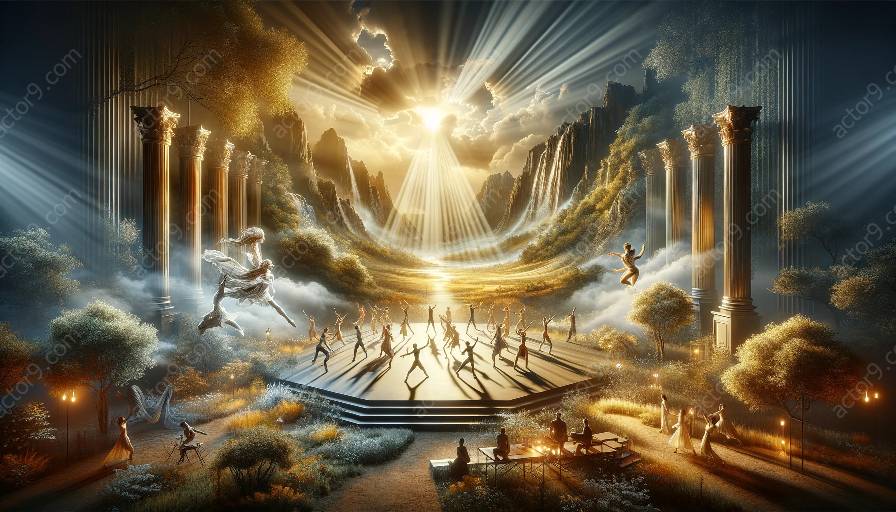When it comes to physical theatre, one of the most crucial elements for creating atmosphere and enhancing the overall experience is lighting. Light has the power to evoke emotions, shape narratives, and guide the audience's focus, making it an essential component of physical theatre performances. In this article, we will explore how lighting contributes to the creation of atmosphere in physical theatre performances and its significant role in the art form.
The Impact of Lighting on Physical Theatre
Lighting plays a pivotal role in setting the mood and atmosphere of a physical theatre performance. Through the interplay of light and shadow, contrasts, and color, lighting designers have the ability to transform the stage and create immersive environments that complement the actions and movements of the performers. These visual elements not only enhance the aesthetic appeal but also contribute to the emotional depth and storytelling of the performance.
Shaping Emotions and Narratives
The strategic use of lighting can directly influence the emotions of the audience and the performers. Bright, warm lights may convey a sense of warmth, intimacy, or joy, while dim, cool lights can evoke suspense, mystery, or melancholy. By manipulating the intensity, direction, and color of light, physical theatre practitioners can effectively convey the narrative elements and elicit specific emotional responses from the audience.
For instance, a single spotlight focused on a performer amidst darkness can emphasize the character's emotional isolation or intensity, while dynamic lighting changes in synchronization with the choreography can enhance the energy and rhythm of the performance. The combination of movement and lighting creates a multi-sensory experience that resonates deeply with the audience, transcending verbal communication alone.
Guiding Attention and Perception
Lighting in physical theatre also serves the practical function of guiding the audience's focus and perception. By selectively illuminating certain areas of the stage or using creative lighting techniques such as silhouette or backlighting, performers can direct the audience's attention to specific gestures, expressions, or symbolic elements within the performance. This intentional manipulation of light enhances the audience's understanding of the narrative and enhances the visual impact of the choreography and physical storytelling.
Creating an Immersive Environment
Furthermore, the combination of lighting and physical space contributes to the creation of immersive environments that transcend traditional theatrical boundaries. In physical theatre, the use of unconventional performance spaces and interactive elements demands innovative lighting design to accommodate the dynamic nature of the performance. Lighting not only accentuates the architecture of the performance space but also blurs the boundaries between the performers and the audience, fostering an immersive and transformative experience for both parties.
Enhancing Symbolism and Metaphor
Lighting design also plays a significant role in conveying symbolism and metaphor within physical theatre performances. The interplay between light and shadow can symbolize duality, conflict, or transformation, adding layers of meaning to the visual composition. Furthermore, the use of lighting as a narrative device can transcend literal representation, allowing for abstract and poetic interpretations that resonate on a deeper, subconscious level with the audience.
By leveraging the expressive potential of lighting, physical theatre practitioners can infuse their performances with rich layers of visual symbolism, inviting the audience to engage in a more profound and multisensory interpretation of the narrative.
Conclusion
In conclusion, the role of lighting in physical theatre performances is indispensable. Lighting not only contributes to the creation of atmosphere but also shapes emotions, narratives, and perceptions within the artistic framework of physical theatre. Through its transformative power, lighting design elevates the sensory and emotional impact of physical theatre, creating immersive environments that engage and captivate the audience on a profound level. Understanding the significance of lighting in physical theatre illuminates the intricate interplay between visual and physical storytelling, underscoring the indispensable role of light in shaping the artistic landscape of physical theatre.




































